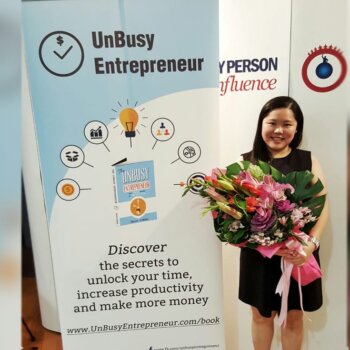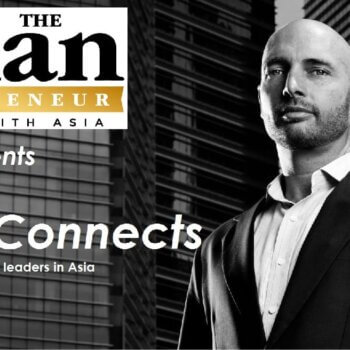(Women on Top in Tech is a series about Women Founders, CEOs, and Leaders in technology. It aims to amplify and bring to the fore diversity in leadership in technology.)
Here is our interview with Janet Brunckhorst, Principal Product Manager at Carbon Five. She works across product, process, and strategy to get things done.
What makes you do what you do?
There are two main things I love about what I do: working with developers to solve complex product problems and developing teams that can create successful products.
I’ve always enjoyed collaborating with developers. Cross-functional collaboration is very satisfying. You can figure out things together that you couldn’t do individually. And I’m passionate about developing strong, effective cross-functional teams. As a consultant, I get to work on a wide range of products across industries, and I get to build a new team with every project.
How did you rise in the industry you are in?
Like most people in product, my career is largely accidental. I started out as an editor at Lonely Planet but had an opportunity to join the IT team. From there I made the jump into digital, doing a combination of product and project management for B2B products. Those were the early days of mobile apps, and I spent a lot of time doing QA on different devices!
My big leap came when Lonely Planet was acquired by BBC Worldwide and we undertook a huge web relaunch project. On such a big project there are opportunities to lead no matter what your role. I was able to demonstrate my skills and flexibility, and towards the end of the project, I became Head of UX, leading the digital design team.
Why did you take on this role/start this startup?
I joined Carbon Five as a Product Manager just over three years ago. Prior to myself and one other PM joining, there was no product competency at Carbon Five, so it was up to us to define and grow the new practice. The overriding reason for me to join Carbon Five was that I knew that the people were exceptional and the culture was extremely supportive and healthy. I knew that I would be set up for success in any project I took on at Carbon Five, which helped to give me the confidence to take on the challenge of establishing the Product role.
Do you have a mentor that you look up to in your industries or did you look for one or how did that work?
I have a few informal mentors, though no formal ones. I have been very fortunate to work with several female managers and senior leaders who actively focused on my development. I also have a couple of former coworkers who I like to check in with when possible to talk about ideas I’m working on. And the Carbon Five partners are all very experienced, skilled practitioners and leaders. I know that I have amazing resources to talk over challenges of any kind.
The hardest part for me in seeking mentorship is asking busy people for their time. I’ve found it helpful to be very focused and prepared when asking for advice or coaching so I can use the time efficiently.
Now as a leader how do you spot, develop, keep, grow and support your talent?
I think this is one of the hardest things about leadership. At Carbon Five, I don’t manage a team directly, but I take a leadership role in my projects. That means that I’m focusing both on the project team (both Carbon Five and client team members) as well as my coworkers. On a project, I ensure that I’m constantly working to monitor and measure how the team is doing, and then applying a rigorous process to understand how to make improvements. Within our product team, we do peer coaching to ensure that we are supporting each other and providing feedback to our fellow product managers. We have diverse backgrounds, so whatever people’s level of “seniority”, we can all learn from each other.
We actually built a tool at Carbon Five called the Product Dartboard that we use to assess how product teams are doing. It’s helpful to have a way to pinpoint areas of focus so you can really prioritize what you need to improve.
Do you consciously or unconsciously support diversity and why?
I consciously support diversity. Partly this just aligns with my personal values. But from a business perspective, more and more research is showing that diverse teams are more successful. It’s a huge conversation in tech now, which is a good thing – the more we talk about it, the more aware people are of the issues and how we might address them. I saw Ellen Pao in conversation with Code 2040 founder Laura Weidman Powers recently, and it really helped to galvanize me into action.
What is your take on what it takes to be a great leader in your industry and as a general rule of thumb?
As outdated as it sounds, I really believe in servant leadership as a model. While I think there’s a place for visionary leaders, in my experience, they always need a sidekick who focuses on people, teams, and process. Leaders should be creating the conditions for success for individuals and teams. That means something different depending on your company, but it holds true for leaders in any industry.
Advice for others?
My advice is twofold: First, stop thinking about “hard” vs “soft” skills. It’s a false dichotomy and causes people to value “soft” skills less. You can bring as much rigor to leadership and team-building as you do to any product decision. And second, read and listen, listen and read. You can learn so much about how to be a leader by listening, not just to other leaders but to the people on their teams and yours. And as a compulsive reader, I think it’s essential to read widely in order to improve your skills. Not just business books. Some of the most insightful works on leadership and teams come from explorers, for example. Which is a great excuse to read books about Antarctica and space!
For me, the next step is to continue to build our data-driven approach to creating great product teams at Carbon Five.





























